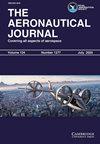Aerodynamic design methods for transonic wings
IF 1.6
4区 工程技术
Q2 ENGINEERING, AEROSPACE
引用次数: 5
Abstract
Summary A review is given of current methods in theoretical aerodynamics which are useful in the design of aircraft wings for subsonic and transonic speeds. These are of two basic types: (A) direct methods for calculating the flow over a givenwing shape. In the design process, these can be used to obtain a rapid estimate of the effect of a specified change in wing shape. The most practical methods of this type make use of the viscous/inviscid interaction technique; some recent methods are described and examples are given of their use, both in two and three dimensions, including comparisons with experiment. (B) inverse methods in which the shape is calculated explicitly, as a result of either (a) specifying the surface pressure distribution on the wing, or (b) requiring that some suitable ‘target’ function, usually the drag/lift ratio, shall be a minimum. At present, these methods are restricted to inviscid flow. Several examples of both ‘pressure’ and ‘optimisation’ methods are discussed, and their advantages and limitations considered.跨声速机翼气动设计方法
综述了目前用于飞机亚、跨声速机翼设计的理论空气动力学方法。它们有两种基本类型:(A)计算给定形状上的流量的直接方法。在设计过程中,这些可以用来快速估计指定的机翼形状变化的影响。这类方法中最实用的是使用粘/无粘相互作用技术;介绍了一些最新的方法,并给出了它们在二维和三维中的应用实例,包括与实验的比较。(B)明确计算形状的反方法,其结果要么是(a)指定机翼上的表面压力分布,要么是(B)要求某些合适的“目标”函数(通常是阻力/升力比)达到最小。目前,这些方法仅限于无粘流体。讨论了“压力”和“优化”方法的几个例子,并考虑了它们的优点和局限性。
本文章由计算机程序翻译,如有差异,请以英文原文为准。
求助全文
约1分钟内获得全文
求助全文
来源期刊

Aeronautical Journal
工程技术-工程:宇航
CiteScore
3.70
自引率
14.30%
发文量
86
审稿时长
6-12 weeks
期刊介绍:
The Aeronautical Journal contains original papers on all aspects of research, design and development, construction and operation of aircraft and space vehicles. Papers are therefore solicited on all aspects of research, design and development, construction and operation of aircraft and space vehicles. Papers are also welcomed which review, comprehensively, the results of recent research developments in any of the above topics.
 求助内容:
求助内容: 应助结果提醒方式:
应助结果提醒方式:


